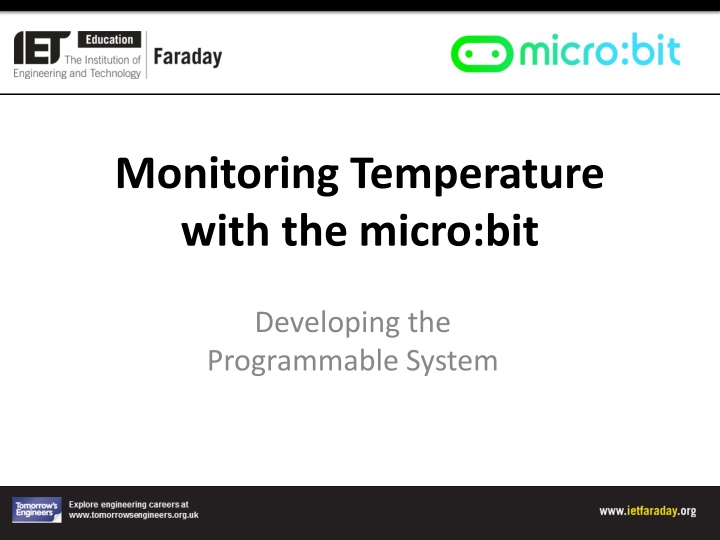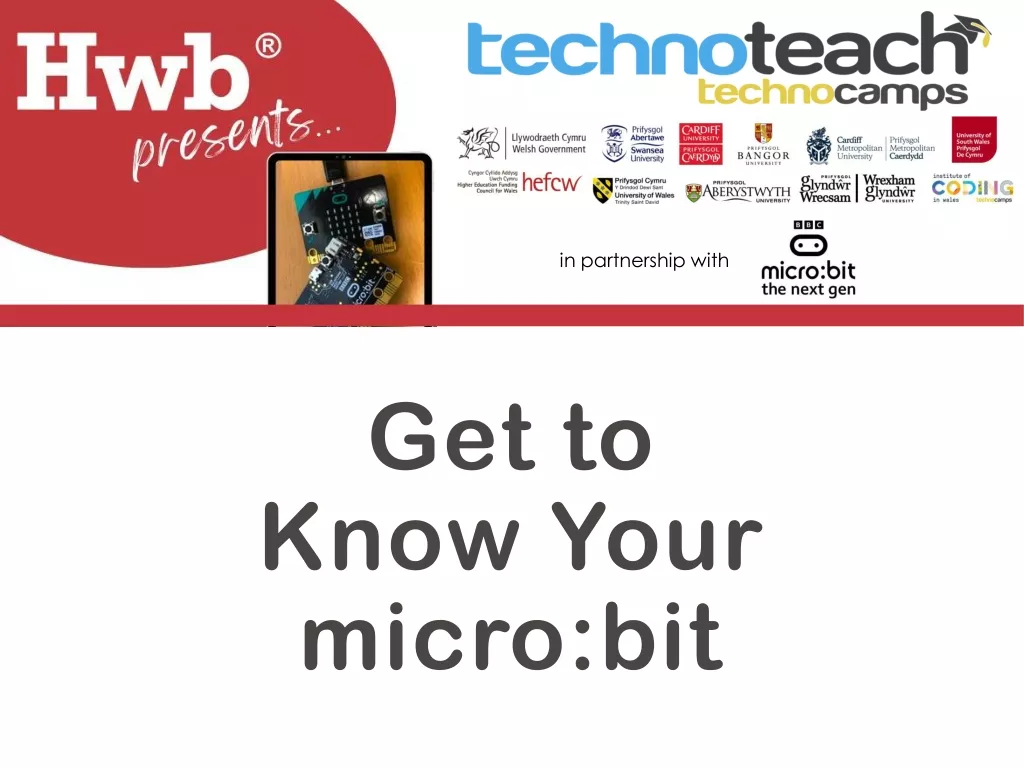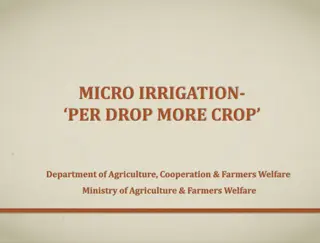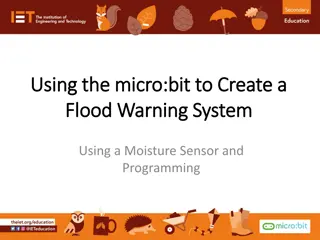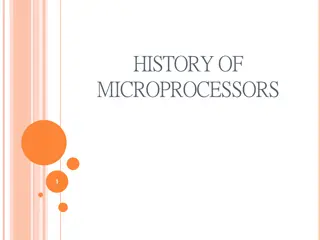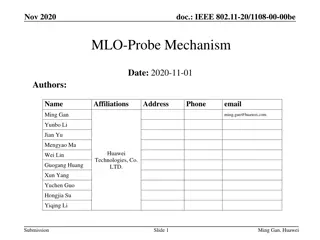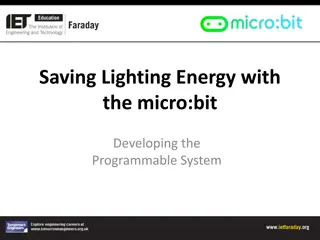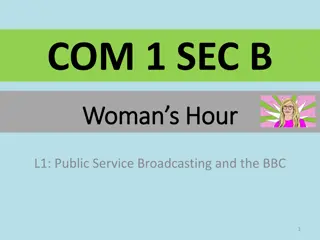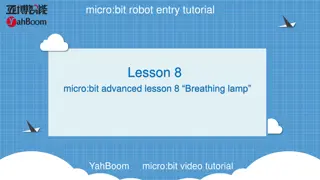Developing a Food Temperature Probe with BBC micro:bit
Design and develop a programmable system using the BBC micro:bit to create a prototype food temperature probe. The system should include a temperature sensor to detect food temperature, a buzzer to sound a warning if the food is too cold, and an LED screen to display the food temperature. Follow the provided design brief and criteria to ensure your program meets the required functionality and calibration standards.
Uploaded on Sep 25, 2024 | 6 Views
Download Presentation

Please find below an Image/Link to download the presentation.
The content on the website is provided AS IS for your information and personal use only. It may not be sold, licensed, or shared on other websites without obtaining consent from the author.If you encounter any issues during the download, it is possible that the publisher has removed the file from their server.
You are allowed to download the files provided on this website for personal or commercial use, subject to the condition that they are used lawfully. All files are the property of their respective owners.
The content on the website is provided AS IS for your information and personal use only. It may not be sold, licensed, or shared on other websites without obtaining consent from the author.
E N D
Presentation Transcript
Monitoring Temperature with the micro:bit Developing the Programmable System
Design Brief Situation It is very important that food is prepared or cooked to the correct temperature. Too cold and it could cause food poisoning, too hot and it could burn. A temperature probe can be used to check that the temperature of food is at the right level. Brief Using the micro:bit create a prototype for a food temperature probe. The product must be able to warn people when their food is too cold to be safe to eat.
Systems Diagram INPUT PROCESS OUTPUT Temperature Sensor Buzzer or beeper Processor Temperature Warning sound A systems or block diagram shows the layout of the system to be created. The blocks represent the physical parts of the system and the arrows represent signals.
Design Criteria The proposed system must: Be programmable using the micro:bit. Use a suitable sensor to detect the temperature of the food that has been cooked. Use a buzzer or beeper to make a warning sound if the food is too cold to be safe to eat. Display the temperature of the food using the micro:bit s inbuilt LED screen.
Time to Develop your Program! Your device must be programmed. Your program must meet the needs of the design brief and the design criteria. You can program your BBC micro:bit using either the JavaScript Blocks Editor or Python Editor. An example program written in each has been given to help get you started. Go to www.microbit.org/code to begin!
Analogue to Digital Converter (ADC) Program Go to www.microbit.org/code and open the JavaScript Blocks Editor. Drag the file microbit-ADCreading-jsb.hex onto the work area. Use this program to read out the ADCValue for a given temperature, by doing your two point calibration. Use your Calibrating Thermistor handout to help with this.
Analogue to Digital Converter (ADC) Program Go to www.microbit.org/code and open the Python Editor. Drag the file ADCReading.py onto the work area. Use this program to read out the ADCValue for a given temperature, by doing your two point calibration. Use your Calibrating Thermistor handout to help with this.
Example Thermometer Program JavaScript Blocks Editor Go to www.microbit.org/code and open the JavaScript Blocks Editor. Drag the file microbit- temperature-jsb.hex onto the work area. With the correct m and c values added this program will act as thermometer and display the temperature. Test it, download it and experiment with how it works!
Example Thermometer Program Python Editor Go to www.microbit.org/code and open the Python Editor. Drag the file temperature.py onto the work area. With the correct m and c values added this program will act as thermometer and display the temperature. Test it, download it and experiment with how it works!
